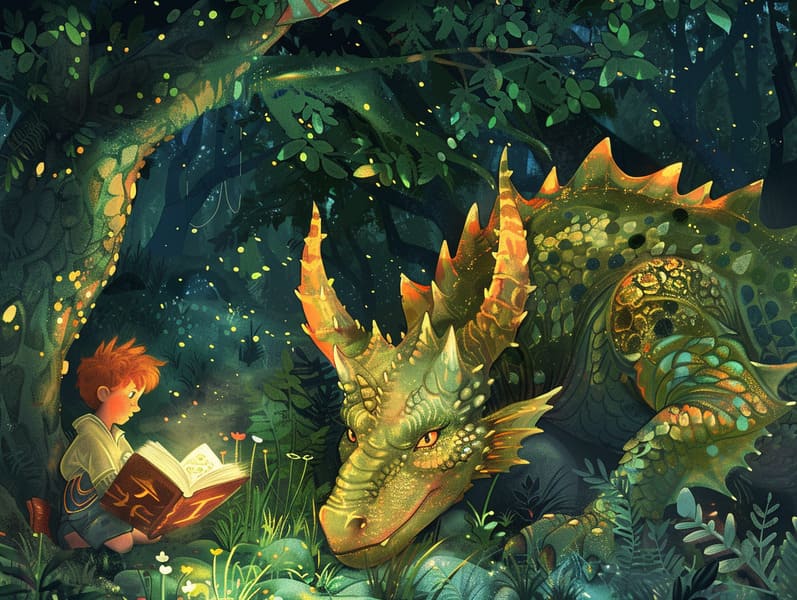
Historical fairy tales have ancient roots. These stories have been transmitted from one generation to the next well before they were ever put on paper. They were born from a variety of societies, including African traditions. They were initially told among elders, often carrying themes and messages reflective of the societal norms and beliefs of the time.
The renowned Brothers Grimm, Jacob and Wilhelm (the Grimm brothers), were among the first to compile many of these beloved narratives. Their anthology, "Grimm's Fables," included classics like "The Story of Cinderella," "Hansel and Gretel," and "The True Story of Snow White," which have since become essentials in the world of iconic fairy tales. Similarly, Hans Andersen's fantastical fairy tales, such as "The Mermaid's Tale," and "The Duckling that Could," have captivated hearts worldwide, establishing their place in the pantheon of beloved fairy tales.
Even though they are old, these tales remain as meaningful as ever, especially as kids' bedtime tales. These fantastical tales are now available in various formats, including vividly illustrated books, whimsical animations, and free fairy tales online.
Their lasting presence can be ascribed to several captivating elements:
Valuable Lessons: Ancient fairy tales often illustrate important moral lessons. Tales like "The Boy Who Cried Wolf" teach the merit of being truthful, while "The Tale of the Tortoise and the Hare" underline the values of resolve and unassuming nature. These tales offer little ones clear distinctions between ethical and unethical, guiding their moral compass in a mild yet meaningful way.
Compassion and Insight: Ancient fairy tales frequently depict beings facing tests and troubles, urging young readers to sympathize with their struggles and cheer for their triumphs. For instance, "The Tale of Beauty and the Beast" reveals the virtue of seeing beyond the surface to appreciate the true essence of a individual, enhancing sympathy and recognition.
Cultural Insights: Many old fairy tales are deeply ingrained in the cultural contexts from which they emerged. Immersing in these narratives can provide enlightening views into different traditions, strengthening a sense of cultural appreciation and knowledge.
Creativity and Fantasy: The extraordinary elements in timeless fairy tales—enchanted lands—promote children’s creativity. These fairy tales bring readers to fantasy realms, stimulating innovative dreams and a sense of fascination that stays a lifetime.
Timeless fairy tales are more info not only delightful but also didactic. They function as entrancing tools in cultivating various cognitive and affective skills in the young. When traditional fairy tales are narrated, they strengthen speech development by bringing new terms and complicated sentence structures. This practice also enhances hearing abilities and attentiveness, as young ones focus on every detail, excited to see what happens next.
Furthermore, exploring the themes and characters of classic fairy tales can strengthen reasoning skills and intellectual skills. Young readers are instructed to discover patterns, forecast, and understand cause and effect. These conversations also facilitate children convey their thoughts and feelings, strengthening their emotional intelligence.
In today’s cyber age, the abundance of free fairy tales online has made these narratives more attainable than ever. Online platforms and mobile apps make available ample collections of old fairy tales that can be looked at or listened via anytime, anywhere. Fairy tales read out loud are particularly sought after, presenting an immersive method for little ones to enjoy these charming tales. Voice books and read-out-loud videos transport characters and settings to life, often augmented by captivating musical scores and songs that intensify the tale journey.
The timeless appeal of classic fairy tales lies in their ability to adapt to present eras while keeping their central messages. Contemporary versions of these stories often feature more varied characters and modern settings, making them understandable to today’s audience. However, the fundamental themes of valour, kindness, and equity remain unchanged, continuing to move children of all ages.
Traditional fairy tales also offer a sense of solace and homeliness. They bequeath a methodical narrative with a unmistakable beginning, middle, and end, often winding up with the ending of conflicts and the triumph of truth over falsehood. This consistency can be easing for the young, affording a sense of steadfastness in an unpredictable world.
Traditional fairy tales continue to enchant and instruct new generations, maintaining their delight and relevance in modern society. As children's bedtime stories, they bequeath a perfect blend of allure and teaching, nurturing moral values, empathy, and creativity. The proliferation of internet fairy tales and the prevalence of fairy tales voiced promise that these ancient tales remain accessible to new generations.
By sustaining and divulging these narratives, we continue to glorify the rich tapestry of cultural legacy and cultural heritage. Whether you are experiencing a artistically illustrated book, seeing a electronic collection, or listening to an narrated book, the grace of timeless fairy tales is always within reach. These fairy tales show us of the timeless magic of tales and its ability to bind us across epochs and places.
Even if you are enjoying a gorgeously illustrated book, enjoying a web-based collection, or listening via an read-aloud story, the majesty of timeless fairy tales is always within reach.
These tales demonstrate of the unending magic of stories and its ability to tie us across time and space, forming a connection that enchants and educates alike.
Comments on “The Formation of Short Fairy Tales with the Invariable Appeal.”